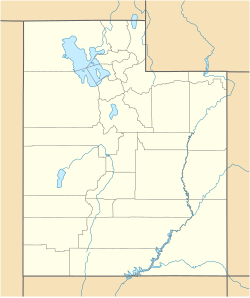Continental Bank Building | |
 Continental Bank Building, May 2019 | |
| Location | 200 South Main Street, Salt Lake City, Utah United States |
|---|---|
| Coordinates | 40°45′53″N111°53′27″W / 40.76472°N 111.89083°W |
| Area | less than one acre |
| Built | 1923 |
| Architect | George William Kelham |
| Architectural style | Late 19th And 20th Century Revivals, Second Renaissance Revival |
| MPS | Salt Lake City Business District MRA |
| NRHP reference No. | 82004850 [1] |
| Added to NRHP | December 27, 1982 |
The Continental Bank Building (now known as the Hotel Monaco) is a historic 13-story commercial building in downtown Salt Lake City, Utah, United States, that is listed on the National Register of Historic Places (NRHP).
Contents




